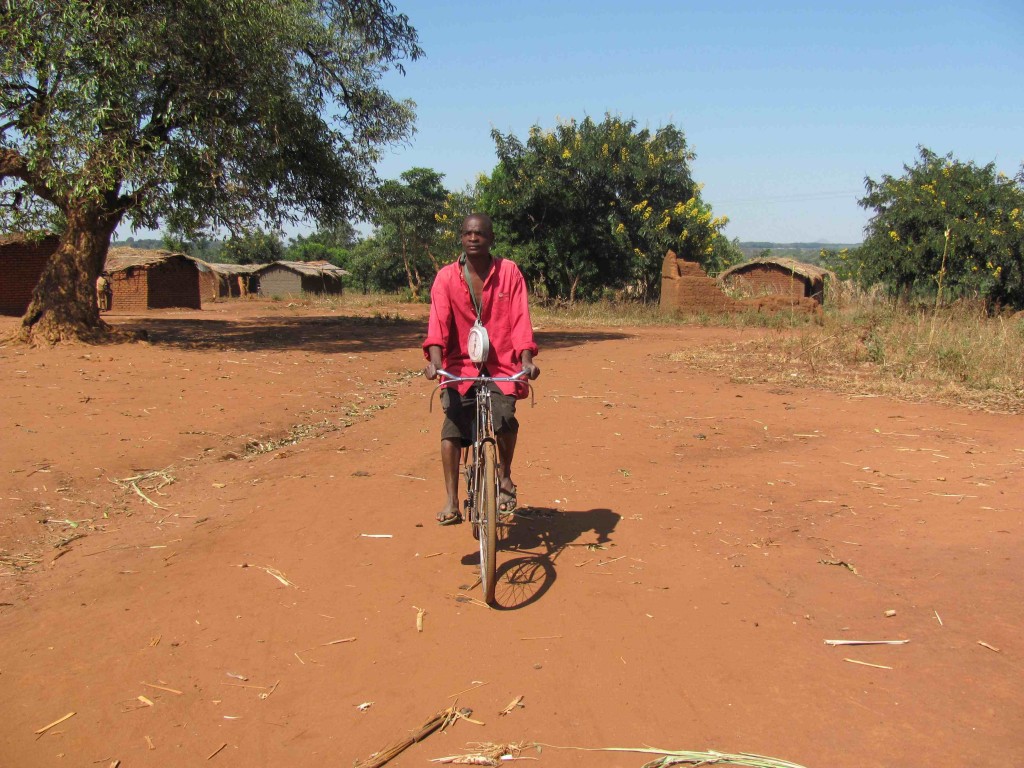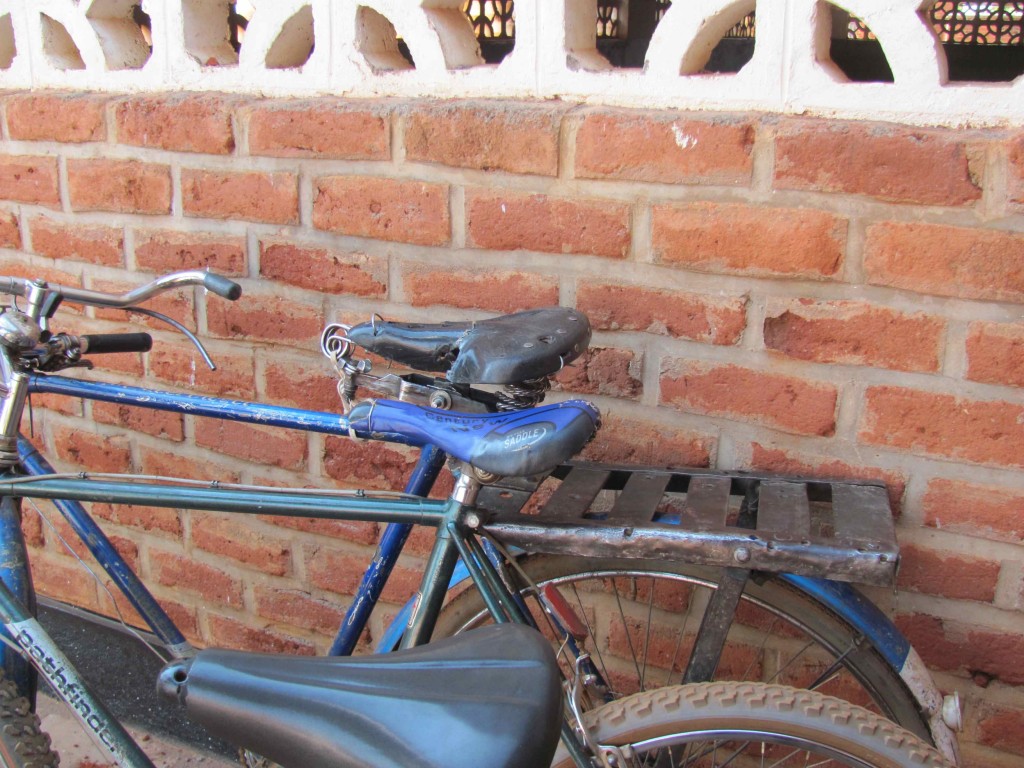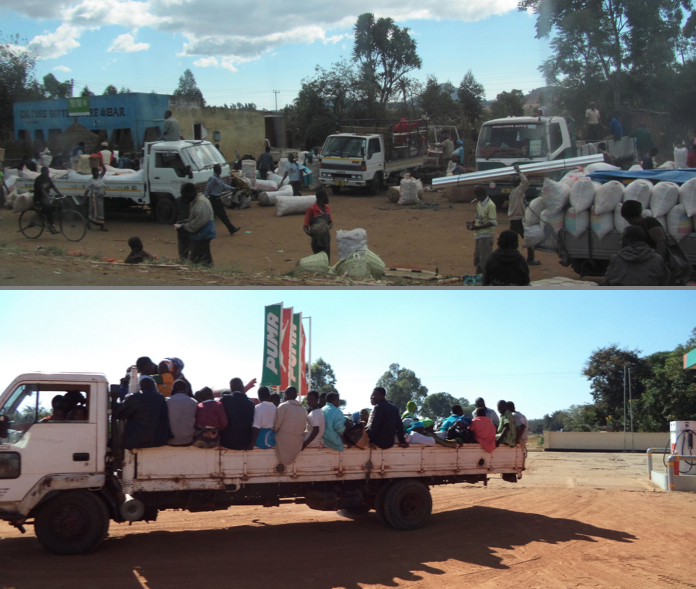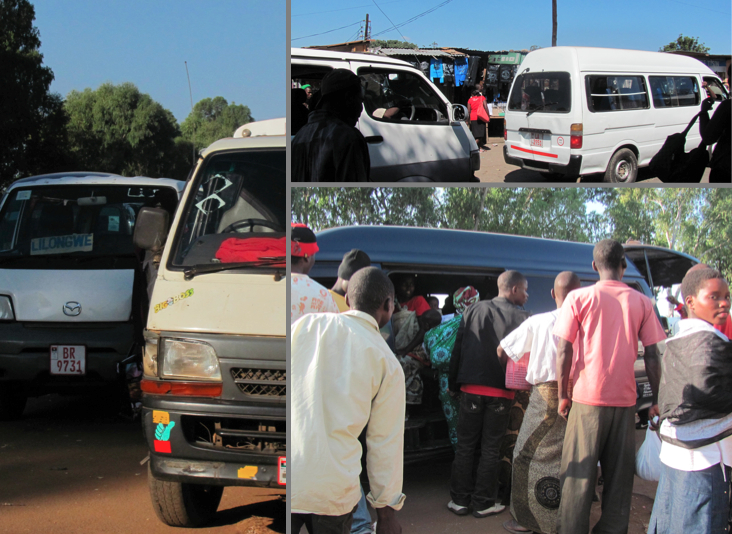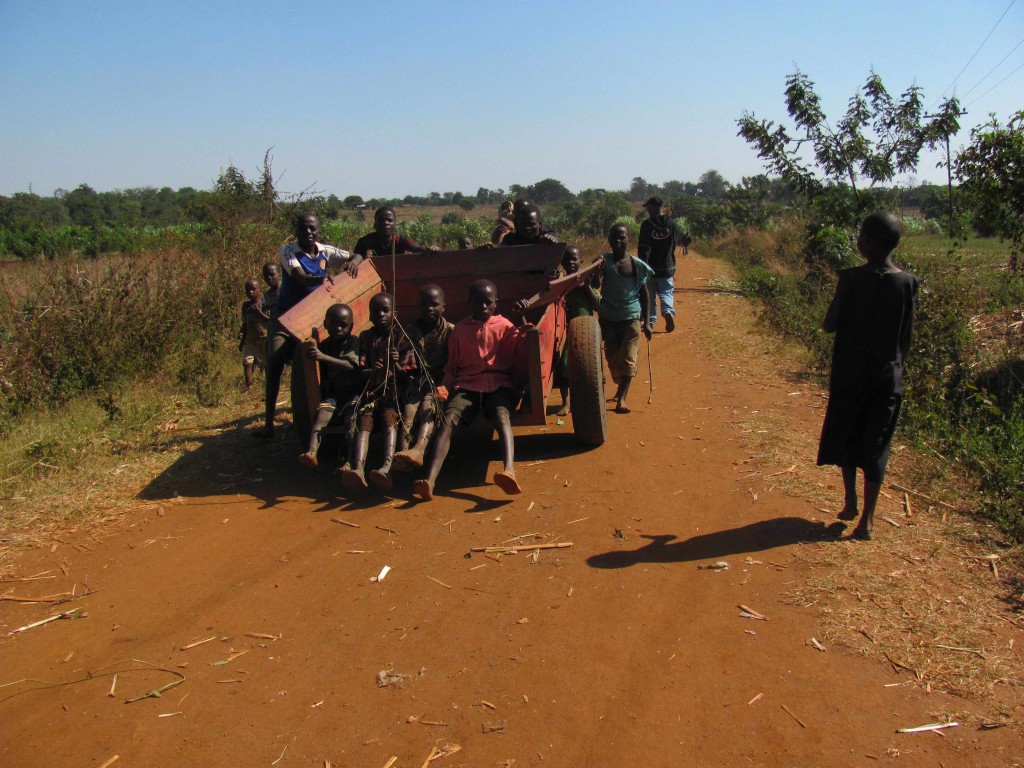It seems like transportation is a hot topic around BTB this week, with Katharine posting about shipping Pumani units and Emily posting a picture of the inside of an Ethiopian ambulance! While easy transportation is an important design criteria for devices that will end up in overseas hospitals (like bCPAP or IV Drip), it can be one of the make-or-break features of a technology like morphine dosing clips that ends up in a patient’s hands.
Bikes are probably the most common mode of transportation other than walking that we see in the villages. Farmers bring their crops to market on bikes, salesmen carry their wares, parents ferry their children to school, and mothers carry a seemingly impossible number of children on their backs and laps to and from the market. The bike taxi bays are always full outside the front gates of the hospital and at the corner of the main road in Namitete, and a 15-minute ride is 300 kwacha.
In terms of carrying home technologies, bikes are tricky. Most bikes here have a flat rectangular platform above the back wheel (on the bike taxis, it’s covered by a cushion to make the seat) on which people carry bags and/or family members. Few people other than school age children seem to have backpacks, and, at upwards of 500 kwacha, the drawstring sport bags in Namitete would probably be too expensive a purchase for most patients to justify. Any technology that goes home with a patient who’s walking or biking, then, needs to be able to be secured to one of those bike platforms. Luckily, however, the platforms are stable enough that St. Gabe’s can fairly easily send patients home with commercial water bottles. Anything more delicate than that, like the thin-walled invertabottle, won’t really work.
We also occasionally see motorcycles (in fact, the “community care appointment” button in DataPall is a motorcycle icon, because Alex is known for using his motorcycle to the villages to save gas.)
In trading centers we see these huge flatbed trucks carrying both crops and big groups of people. Judging by the soda sellers who strap on gravity-defying 5-crate pyramids of glass bottles, I think the bike platforms are strong enough that weight is an inconsequential constraint if shape is right (though not for patients walking). In these crowded trucks, though, size become a critical concern: the bed of that truck is filled, wall-to-wall, with people and their bags.
The other way people travel between major centers cheaply is minibusses. They’re prone to functional errors and they make that flatbed truck above look veritably deserted. For patients travelling on this public transport, space is at a premium and sharp edges must be hugely problematic.
(Don’t worry, Mom: they’re expressly forbidden by BTB. When we need to travel into Lilongwe we find a car.)
Once they make it off of a big road and get closer to their village, robustness really comes to the test: transportation that is designed to work for 50kg bags of maize won’t necessarily accomodate a fragile device. Daniel wrote about a patient at Queen’s who doctors thought about sending home to her village. There were clearly bigger obstacles to her care than transportation (namely: supply of oxygen, caretaker capabilities, advancement of illness), but it bears thinking about: even if a local hospital had enough oxygen tanks to give a supply to her family, how would they have gotten it there? Anything designed to go home with patients in this kind of setting should pass a modified kind of high school physics egg drop test: roll it down a gravel stretch of the outer loop on a skateboard, and see how it holds up. That’s what the roads feel like once you get off the asphalt.
“Easy to transport” isn’t exactly the easiest thing to ensure when you’re building a device that needs more features and more functions. It’s a shame, though, when the barrier to use for an otherwise-promising technology is something as simple as getting it home from the hospital.
